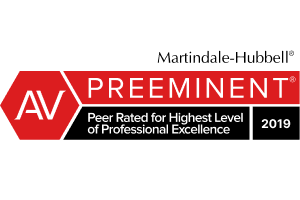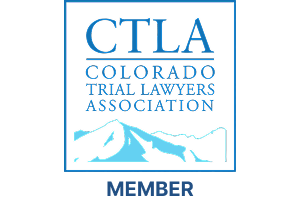Sideswipe / Lane Change Truck Accidents
Sideswipe and lane change crashes with large trucks do not always grab headlines, but they can be devastating. A glancing impact at highway speed can send a smaller car into adjacent lanes, concrete barriers, or under the trailer. Secondary collisions are common. Even when sheet metal damage looks modest, the forces on occupants can be severe, and the medical storyline often tells a different tale than the photos suggest.
At Cook Bradford & Levy, headed by trial lawyers Jason Levy and Brian Bradford, we approach these cases with the urgency they deserve. We move quickly to secure key evidence, we retain the right experts, and we prepare every claim as if a jury will decide it.
What a Sideswipe or Lane Change Crash is, And Why It Can Be So Dangerous?
A sideswipe occurs when two vehicles traveling in roughly the same direction make lateral contact. With tractor trailers, that contact often begins when the truck initiates a lane change or drifts over the lane line. Because of the truck’s mass, even a modest overlap can push a smaller vehicle sideways, rotate it into the trailer, or cause loss of control. In multilane traffic, a simple brush can turn into a chain reaction as nearby drivers brake and swerve. If the smaller vehicle is forced into a guardrail or the truck’s trailer wheels, the result can be catastrophic. Occupants experience lateral acceleration that seat belts do not manage as well as frontal loads, and the risk of secondary impact to the driver’s side door or roof rail rises sharply.
The Duty Rules That Matter
Federal trucking regulations set out straightforward expectations. Commercial drivers must obey the traffic laws of the state in which they are operating, they must drive only when fit for duty, and they must use extreme caution when weather affects visibility or traction. In lane change contexts, those basic duties translate into concrete behaviors. Maintain a safe speed and following distance so that lane changes are deliberate rather than sudden. Signal and hold the signal long enough for adjacent traffic to react. Check mirrors, then recheck immediately before crossing the lane line. Avoid lane changes in curves, on downgrades, or through high speed interchanges when space is tight. If fatigue, illness, or distraction interfere with safe operation, the driver must not continue.
The rules for equipment also matter. Required mirrors must provide the field of view needed to see along both sides of the vehicle. Marker and turn signal lights must be functional, clean, and visible. Tires and suspension must be maintained so that the rig tracks straight under steady throttle and braking. Systematic inspection and repair duties fall on both the motor carrier and the driver, and daily inspection reports that list defects without documented correction can become central exhibits in a sideswipe case.
Proving Fault in a Sideswipe or Lane Change Case
Scene and vehicle evidence
Proper lane change cases are built on details. We start with the police report and diagram, then expand outward to photographs, roadway measurements, and any available traffic or business video that captured the movement. Tire scuffs near the lane line, mirror debris location, transfer paint on trailer skirts, and streaks on barrier walls help reconstruct the angle and overlap at impact. The damage patterns on both vehicles can reveal whether the truck was entering or exiting the lane and whether the smaller vehicle was pushed or pulled during contact.
We also secure the tractor and trailer for inspection. Mirror positions can be photographed and measured. Turn signal function, lens condition, and marker light visibility are documented. Steering and suspension components are evaluated for play that could contribute to drift. Tire condition and inflation are checked, since irregular wear can indicate alignment issues or poor maintenance that make a vehicle wander. Modern tractors often carry lane departure or blind spot alert systems, and fault codes or settings can show whether they were active at the time of the crash.
Electronic data
Electronic logging devices, telematics, and engine control modules provide a timeline that is difficult to dispute. Speed by segment, brake applications, throttle position, lane departure warnings, and hard braking events can anchor witness testimony. GPS breadcrumbs show the truck’s exact path and lane position when paired with high resolution maps. Some fleets equip side cameras or 360 degree video that captures merge and lane change behavior. We move fast to obtain, download, and preserve these data before automatic deletion cycles overwrite them.
Witnesses and human factors
Independent witnesses often see what drivers inside the vehicles cannot. A witness can describe whether the truck signaled, whether the driver drifted into the lane without warning, or whether the car tried unsuccessfully to escape to the shoulder. Human factors experts analyze perception response time, mirror usage, and workload management. For example, an expert may explain why a single mirror glance is not enough in dense traffic and why a professional driver must recheck immediately before moving over, particularly on the right where blind areas are longest.
Building Damages in a Sideswipe Case
Sideswipe injuries can be severe because lateral forces concentrate energy into the shoulder, rib cage, and cervical spine. Common harms include whiplash with radiculopathy, torn shoulder tendons, rib fractures, pelvic or hip injuries from intrusion, traumatic brain injury from head strikes, and post concussion symptoms that disrupt work and family life. Even low profile damage to a vehicle door can mask a high energy lateral load on the occupant’s body. Medical records, imaging, and treating physician testimony explain diagnosis and prognosis, while life care planners and vocational experts translate limitations into real dollars and necessary services. In wrongful death claims, families face funeral expenses, lost financial support, and the loss of companionship and guidance. Colorado’s comparative negligence system allows recovery to be reduced by any percentage of fault assigned to the plaintiff, but it does not eliminate a claim unless the plaintiff’s responsibility is greater than that of all defendants combined. Where proof supports it, exemplary damages may be available for willful and wanton conduct, such as knowingly placing a fatigued driver on a tight schedule through storms or disabling safety alerts that would have prevented the crash.
How Cook Bradford & Levy Builds These Cases?
Immediate preservation and investigation
Time sensitive evidence disappears quickly. We send preservation letters at once, demand that the tractor and trailer be secured, and arrange for a prompt joint inspection when practical. We document mirror settings, signal function, light output, and any advanced driver assistance settings and fault codes. We collect dash and side camera video, if equipped, along with traffic camera footage from nearby interchanges and businesses. We obtain electronic logging and telematics before automated systems overwrite them. We identify and interview witnesses while their memories are still fresh, and we map the roadway to capture lane widths, taper lengths, and sight lines that influence safe lane change decisions.
Expert work that makes the story clear
Accident reconstructionists use vehicle geometry, damage profiles, lane widths, and contact points to model the movement of both vehicles. Mechanical engineers evaluate lighting and mirror performance, steering and suspension condition, and whether any maintenance gaps made the truck more likely to drift. Human factors experts explain what a professional driver should do in dense traffic or poor weather and how long signals and mirror checks should last for a safe merge. When appropriate, we use demonstratives that show exactly where a passenger vehicle would appear in the driver’s mirrors and how a final mirror sweep would have revealed its presence.
Negotiation backed by trial readiness
Insurers evaluate proof and risk. We prepare demand packages that present the entire story in a measured, persuasive way. These packages include timelines from telematics and video, inspection photographs, expert summaries, and medical documentation that ties injuries to the forces involved. If fair settlement discussions stall, we file suit, conduct thorough discovery into company policies, training, dispatch communications, driver history, and maintenance programs, and we prepare to try the case. A trial ready posture often moves negotiations forward. When it does not, we are ready to present your case to a Colorado jury.
Frequently Asked Questions
Who usually has the right of way in a lane change?
The vehicle already in the lane has the right of way. A driver who changes lanes must ensure that the movement can be made safely. For commercial drivers, that duty includes signaling, checking mirrors, and rechecking immediately before moving over. If traffic is dense or weather is poor, the safest choice may be to delay the lane change until the margin for error improves.
Are truck blind spots a defense?
Blind spots are a hazard to be managed, not a free pass. Professional drivers learn to minimize blind spot risk by mirror adjustment, slower and more deliberate lane changes, and a final mirror check. Many fleets add technology such as blind spot sensors or side cameras. If those tools are missing or disabled, a jury can consider whether the carrier made reasonable safety choices.
What if the truck driver says a car cut him off?
Sudden cut in claims are common. They must be tested against electronic data, video, and witness accounts. The driver’s speed, following distance, and signaling matter. A professional driver is expected to anticipate dense traffic near interchanges and to keep a stable lane until it is clearly safe to move. Even if another motorist shares some responsibility, that does not eliminate the truck driver’s duty to use reasonable care.
Does compliance with federal rules end the case?
No. Compliance with a minimum standard is evidence, not a shield. Courts allow juries to decide whether a driver and carrier acted reasonably in the real world. If mirrors were present but misadjusted, if signals were activated only an instant before moving, or if weather demanded extreme caution that was not used, a claim can succeed.
How long do I have to act?
Colorado law sets deadlines for injury and wrongful death claims. Important proof can be lost within days as video is overwritten and telematics systems purge data. Calling a lawyer quickly allows immediate preservation of vehicles and data and gives your medical team an opportunity to connect injuries to the crash in a timely way.
What Sets Cook Bradford & Levy Apart
Truck accident litigation is not just about reading a police report or arguing fault; it is about understanding the science behind how these collisions happen and the federal and state rules that govern every mile a commercial driver travels. At Cook Bradford & Levy, our attorneys combine engineering-level analysis with decades of courtroom experience. We work with accident reconstruction experts, data analysts, and trucking safety specialists to uncover exactly what went wrong and why. Partners Jason Levy and Brian Bradford bring a trial-ready mindset to every case, ensuring that evidence is not only gathered but presented in a way that resonates with judges and jurors.
We do not represent corporations or insurers. Our loyalty lies with people: the victims and families blindsided by a truck driver’s split-second mistake or a company’s corner-cutting policies. Clients choose us because we explain the process clearly, communicate consistently, and treat every case as if it were going before a jury tomorrow.
Your Recovery Starts With the Right Legal Team
A lane-change or sideswipe collision with a tractor-trailer is far more complex than it looks from the outside. These crashes often involve blind-spot physics, improper mirror placement, fatigue-related inattention, or mechanical factors like trailer sway. Proving fault requires immediate evidence preservation, from dash-cam footage and black-box data to driver logs and company safety records. Cook Bradford & Levy moves quickly to lock down that proof before it disappears.
Our team approaches each case with the precision of investigators and the persistence of trial lawyers who know what is at stake. We pursue every available source of compensation, including medical bills, lost income, future care, and the human losses that cannot be measured in spreadsheets.
Cook Bradford & Levy stands ready to act the moment you call. We will secure the evidence, engage trusted experts, and prepare a strategy aimed at the best possible result, whether through negotiation or trial in a Colorado courtroom.
Reach out today to speak directly with an attorney. Your Colorado sideswipe accident case deserves immediate attention, honest counsel, and the full strength of a firm built on results.









